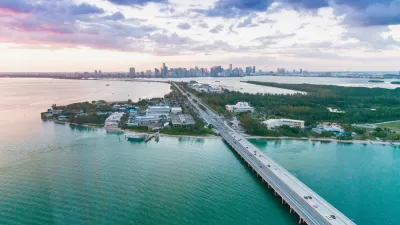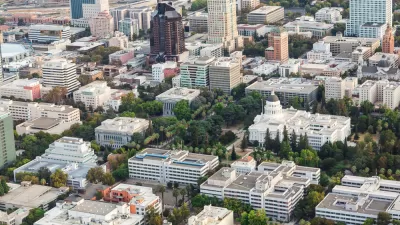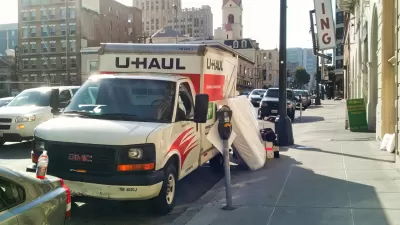A new analysis indicates that many big cities saw their biggest population declines in at least a decade, with suburbs also showing a slowdown in growth.

New data from the Census Bureau shows dramatic population losses in the 88 largest U.S. cities, writes Brookings senior fellow William H. Frey. A Brookings analysis “places these estimates in the context of recent decades’ trends, when America’s big cities experienced noticeable ups and downs. It then shifts the focus to the suburbs of major metropolitan areas, which—while benefitting somewhat from recent city population losses—tend to display growth slowdowns of their own.”
The article outlines the changes in big-city population growth since the start of the millennium, as the early years brought on a suburban boom followed by a slowdown in suburban growth during the 2007-2009 recession. “The pandemic began to affect city growth in 2019-20, and even more so in 2020-21—the first year this century when large cities in aggregate registered a population loss, declining by 1%.” Between 2020 and 2021, “Fourteen cities experienced their first population losses since at least 2010, including Washington, D.C., Atlanta, Denver, Houston, Minneapolis, San Diego, and Seattle.”
The analysis highlights the drastic impact of the pandemic. “Examining data going back two decades, there was no individual year that comes close to showing the population declines that these cities witnessed in 2020-21, alongside slower growth in their entire metro areas and suburbs.” But while the dramatic loss of population may be a pandemic-era blip, changes like the shift to remote and hybrid work signal that a “return to the city” is “less inevitable than it would otherwise be.”
FULL STORY: Big cities saw historic population losses while suburban growth declined during the pandemic

Study: Maui’s Plan to Convert Vacation Rentals to Long-Term Housing Could Cause Nearly $1 Billion Economic Loss
The plan would reduce visitor accommodation by 25,% resulting in 1,900 jobs lost.

North Texas Transit Leaders Tout Benefits of TOD for Growing Region
At a summit focused on transit-oriented development, policymakers discussed how North Texas’ expanded light rail system can serve as a tool for economic growth.

Using Old Oil and Gas Wells for Green Energy Storage
Penn State researchers have found that repurposing abandoned oil and gas wells for geothermal-assisted compressed-air energy storage can boost efficiency, reduce environmental risks, and support clean energy and job transitions.

Santa Barbara Could Build Housing on County Land
County supervisors moved forward a proposal to build workforce housing on two county-owned parcels.

San Mateo Formally Opposes Freeway Project
The city council will send a letter to Caltrans urging the agency to reconsider a plan to expand the 101 through the city of San Mateo.

A Bronx Community Fights to Have its Voice Heard
After organizing and giving input for decades, the community around the Kingsbridge Armory might actually see it redeveloped — and they want to continue to have a say in how it goes.
Urban Design for Planners 1: Software Tools
This six-course series explores essential urban design concepts using open source software and equips planners with the tools they need to participate fully in the urban design process.
Planning for Universal Design
Learn the tools for implementing Universal Design in planning regulations.
Ascent Environmental
Borough of Carlisle
Institute for Housing and Urban Development Studies (IHS)
City of Grandview
Harvard GSD Executive Education
Toledo-Lucas County Plan Commissions
Salt Lake City
NYU Wagner Graduate School of Public Service





























